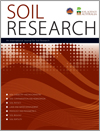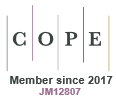SR23174Soil aluminum saturation threshold for subtropical crops in no-tillage system
 , Alexandre Troian
, Alexandre Troian  , Marília Camotti Bastos
, Marília Camotti Bastos  , Gustavo Pesini
, Gustavo Pesini  and Tales Tiecher
and Tales Tiecher 
Agricultural production models in subtropical regions should involve the use of Al-tolerant plant varieties that respond well to the application of lime. We have been monitoring soil reacidification and its impact on crop yields for more than 3 decades following the conversion from conventional to no-tillage cultivation. The tolerance of the varieties to Al3+ made it possible to obtain high and stable yields only with superficial reapplications of lime, because the natural potential acidity had been amended when adopting no-tillage.




